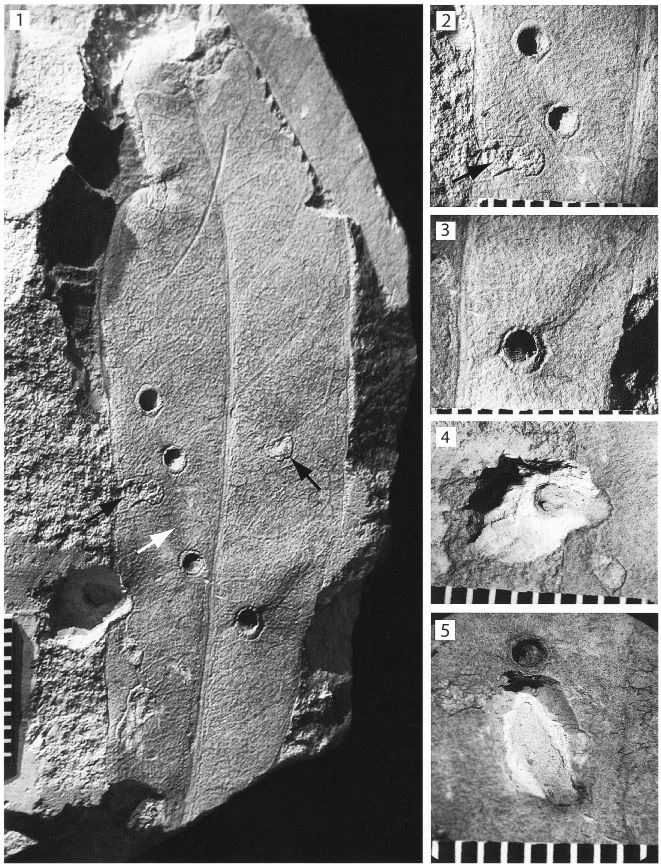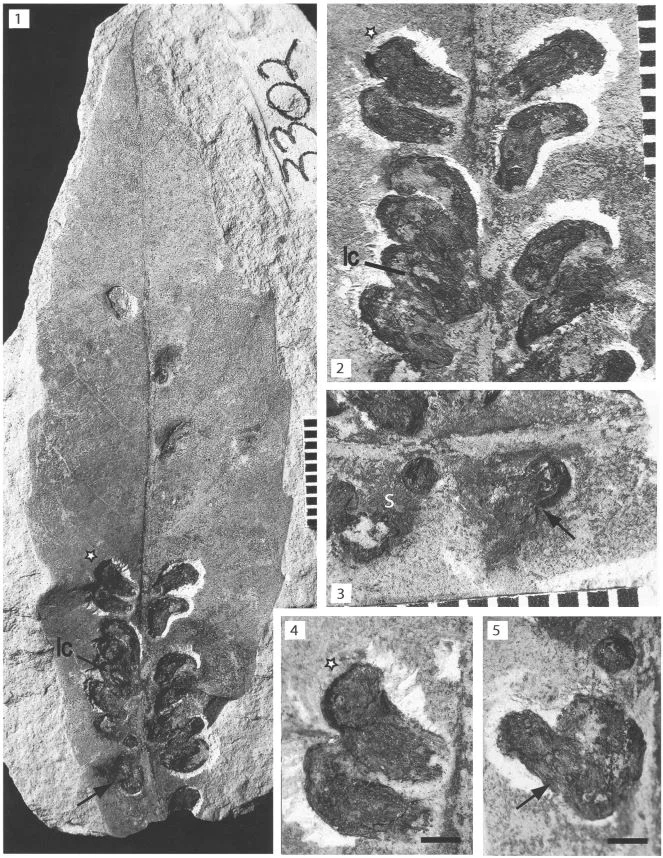M J Richardson / Common spangle galls / CC BY-SA 2.0
We can learn a lot about life on Earth from the fossil record. I am always amazed by the degree of scrutiny involved in collecting data from these preserved remains. Take, for instance, the case of gall-making wasp fossils found in western North America. A small collection of fossilized oak leaves is giving researchers insights into the evolutionary history of oaks and the gall-making wasps they host.
Oaks interact with a bewildering array of insects. Many of these are gall-making wasps in the family Cynipidae. Dozens of different wasp species can be found on a single oak tree. Female wasps lay their eggs inside developing oak tissues and the larvae release hormones and other chemicals that cause galls to form. Galls are essentially edible nursery chambers. Other than their bizarre shapes and colors, the compounds released by the wasp larvae reduce the chemical defenses of the oak and increase the relative nutrition of the tissues themselves. Often, these relationships are precise, with specific wasp species preferring specific oak species. But when did these relationships arise? Why are oaks so popular? What can fossil evidence tell us about this incredible relationship?
Photo by Beentree licensed under CC BY-SA 4.0
Though scant, the little fossil evidence of oak galls can tell us a lot. For starters, we know that gall-making wasps whose larvae produce structures similar to that of the Cynipids have been around since at least the late Cretaceous, some 100 million years ago. However, it is hard to say for sure exactly who made these galls and exactly what taxonomic affinity the host plant belongs to. More conclusive Cynipid gall fossils appear again in the Eocene and continue to pop up in the fossil record throughout the Oligocene and well into the Miocene (33 - 23 million years ago).
Miocene aged fossils are where things get a little bit more conclusive. Fossil beds located in the western United States have turned up fossilized oak leaves complete with Cynipid galls. The similarity of these galls to those of some present day species is incredible. It demonstrates that these relationships arose early on and have continued to diversify ever since. What's more, thanks to the degree of preservation in these fossil beds, researchers are able to make some greater conclusions about why gall-making wasps and oaks seem to be so intertwined.
Holotype of Antronoides cyanomontanus galls on fossilized leaves of Quercus simulata. 1) Impression of the abaxial surface of the leaf, showing the galls extending into the matrix. 2) Galls showing close association with secondary veins. 3) Gall showing the impression of rim-like base partially straddling the secondary vein. 4) Close-up of gall attached at margin extending down into the matrix. 5) Gall uncovered revealing spindle-shaped morphology.
1) Xanthoteras clavuloides galls on fossilized Quercus lobata, showing gall attached to secondary vein. Specimen in California Academy of Sciences Entomology collection, San Francisco. 2) Two galls of attached to a secondary vein showing overlap of their bases. Specimen in California Academy of Sciences Entomology Collection, San Francisco. 3) Three galls collected from leaf of California Quercus lobata showing clavate shape and expanded, ring-like base. 4) Gall showing the annulate or ribbed aspect of the base, which is similar to bases of Antronoides cyanomontanus and A. polygonalis. 5) Galls showing clavate shape, pilose and nonpilose surfaces, and bases.
Gall-making wasps seem to diversify at a much faster rate in xeric climates. The fossil records during this time show that mesic tree speciess were gradually being replaced by more xeric species like oaks. Wasps seem to prefer these drier environments and the thought is that such preferences have to do with disease and parasite loads.
Again, galls a large collections of nutrient-rich tissues that are low in defense compounds. Coupled with the juicy grub at their center, it stands to reason that galls make excellent sites of infection for fungi and other parasites. By living in drier habitats, it is believed that gall-making wasps are able to escape these environmental pressures that would otherwise plague them in wetter habitats. The fossil evidence appears to support this hypothesis and today we see similar patterns. White oaks are especially drought tolerant and its this group of oaks that host the highest diversity of gall-making wasps.



